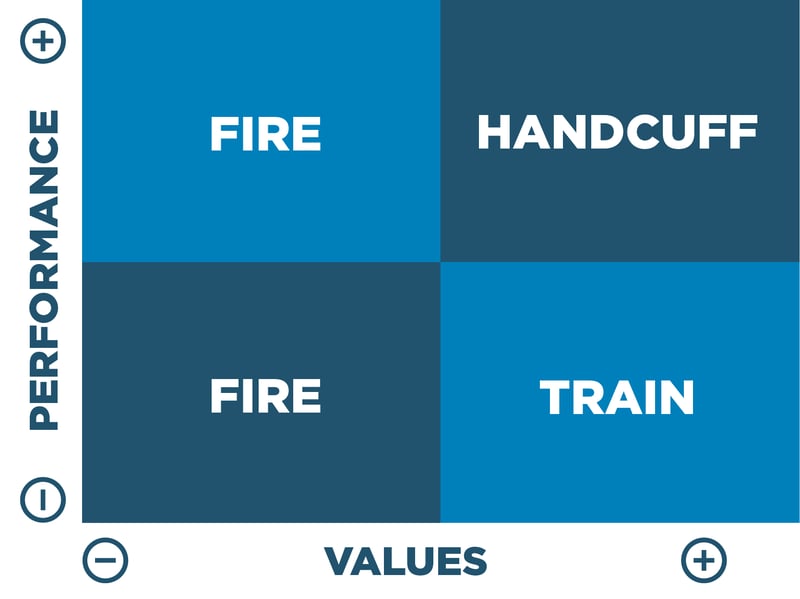“WWJD?: What Would Jack Do?” Jack, as in Jack Welch, the former CEO of GE. Welch created a clear-cut matrix to help him decide who to keep or get rid of.
I waited in the executive pastor’s office, scanning the neatly organized spines on the shelf - Hybels, Moore, Warren, Lencioni, Welch, Cloud, Townsend - all strategic leaders and authors I also admired. Below the dusty horizontally-aligned books, though, were binders, file folders, sticky notes, family photos and mementos spilling off the shelves onto the adjacent table and floor. It appeared the pastor was a busy woman with good intentions.
She entered the room, smiled, shook my hand and sat down across from me.
“So, Lindsay, you’ve been here with us, week after week for a month,” she said. “Tell me, what needs to change?”
I admire honesty and directness. I took a deep breath, looked her in the eyes and said, “You need to fire him. He’s overworked, passive aggressive, behind in his skills and is bringing the entire department down.”
She lowered her shoulders, looked away and replied, “I thought you might say that. I’ve given him a year to improve, but he hasn’t.”
A year? I thought. You spotted this toxin a year ago and let it keep doing harm? Deep down, though, I wasn’t surprised. I’ve seen this before - from city government, to nonprofits, to churches - leaders who won’t cut the cord and rid the organization of toxic employees.
They hope things will improve. They pray about it. They talk about it with others. They give second chances, and thirds, and fourths. They think they’re helpless without this person. They consider how long it might take to find someone new. They worry about hurt feelings. They’re concerned others will be upset.
Yet, while they pray, wait and hope, nothing gets better. While the leader’s co-dependent and shame-based thinking keeps the employee in place, his cancer spreads to other team members and departments.
What Would Jack Do?
My client had great leadership books right at her fingertips, yet the chaos of her everyday life had tied her down from picking one up and reading it. Had she read one, she might find a helpful mantra, “WWJD?: What Would Jack Do?” Jack, as in Jack Welch, the former CEO of GE. Welch created a clear-cut matrix to help him decide who to keep or get rid of.
Matrix

Fire = Low values + Low performance OR Low values + High performance
- When everything is low, it’s a pretty simple conclusion. But, even if an employee has high results but low values, it’s time to fire them. They’re doing more harm than good. If your employee is toxic to your internal team, he/she is likely toxic to your congregation and external audience too.
Train = High values + Low performance
- But before you do, make sure they’re in the right seats! Ensure they have a 90-day performance and professional development plan to give them a chance to make improvements. If they do, set another 90-day plan with goals. If, however, after 90 days there is no progress, let them go.
Handcuff = High values + High performance
- These are the keepers! Find out what motivates and satisfies these people and ensure they stay inside your organization.
Firing someone might just be the hardest task you have in your role at your organization. But, on the other hand, it might be the most freeing. When my client fired the toxic employee, his first question to her was, “Why didn’t you do it sooner?” He knew he wasn’t the right man for the job, and being fired was the best decision for both parties.
Having issues with your team and not sure what to do? Click below to schedule a conversation with our founder, Evan McBroom. Meet him for coffee or schedule a phone call or video chat.

